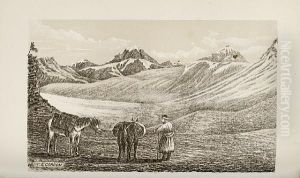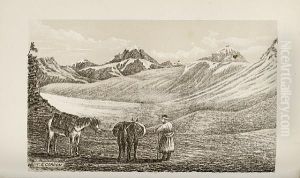Thomas Edward Gordon Paintings
Thomas Edward Gordon was a British army officer, diplomat, and travel writer, rather than a professional artist, but his works provide significant visual documentation of the regions he explored. Born on January 12, 1832, in Aberdeen, Scotland, Gordon embarked on a military career that would take him to many parts of the British Empire.
Gordon was not primarily known for his artistic endeavours, but rather for his service in the British Army and his subsequent travel writings. He joined the army at a young age and eventually became a Captain in the Bengal Engineers. Throughout his military career, Gordon was involved in numerous expeditions, including the Second Opium War in China. Later on, he served as a military attaché in various locations, such as Tehran.
His travels in Central Asia during the period known as The Great Game, a political and diplomatic confrontation between the British Empire and the Russian Empire, led to his most notable written works. These include 'The Roof of the World: Being the Narrative of a Journey over the High Plateau of Tibet to the Russian Frontier and the Oxus Sources on Pamir' and 'A Varied Life: A Record of Military and Civil Service, of Sport and of Travel in India, Central Asia and Persia, 1849-1902'.
In these books, Gordon provided not only vivid accounts of his travels and the geopolitical climate of the regions he visited but also included illustrations that he produced. His drawings and paintings serve as historical records of the places and people he encountered during his travels. They reflect the Victorian British perspective on the exotic and remote regions of the empire and beyond, and are valuable for their ethnographic and topographic content.
While Thomas Edward Gordon's contributions to art may not place him among the most renowned artists of his time, his works are a testament to the intersections of military service, exploration, and visual documentation in the 19th century. Gordon passed away on April 23, 1914, leaving behind a legacy that provides insights into the British imperial mindset and the historical landscapes of Central Asia and the Middle East.

